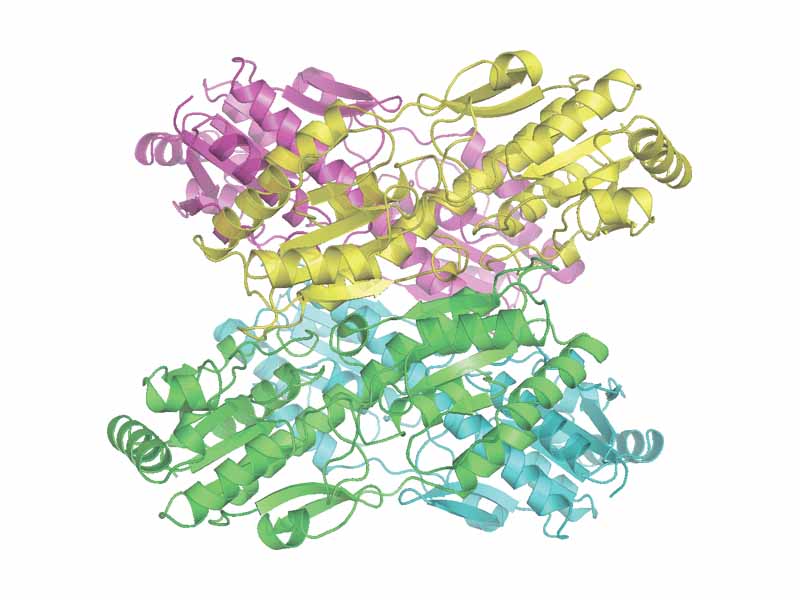Glycolysis is the biochemical pathway by which glucose is converted into pyruvate via fructose-1,6-bisphosphate. A sequence of ten enzymatic reactions, glycolysis generates 2 mol ATP/mol of glucose. Glycolysis is the main source of energy for most anaerobic organisms. In aerobic organisms, in addition to providing some ATP, glycolysis plays the role of transforming glucose, as well as some other sugars, into the substrate of oxidative degradation.
Glycolysis is the quintessential biochemical pathway. Glycolysis is not only important in MCAT review for itself, but also as a model for enzymatic mechanisms and their underlying organic chemistry. Additionally, glycolysis is a model for the regulation of biochemical pathways in the context of physiological integration.
WikiPremed Resources
Bioenergetics and Cellular Respiration Images
Conceptual Vocabulary Self-Test
Basic Terms Crossword Puzzle
Basic Puzzle Solution
Conceptual Vocabulary for Glycolysis & Pyruvate Dehydrogenase
Glycolysis & Pyruvate Dehydrogenase
An anaerobic organism is any organism that does not require oxygen for growth.
Adenosine triphosphate is a multifunctional nucleotide that is most important as a molecular currency of intracellular energy transfer.
Glycolysis is the initial process of most carbohydrate catabolism serving the functions of producing ATP and NADH, pyruvate for the citric acid cycle, and a variety of other compounds which are important for biosynthesis.
Pyruvic acid is an alpha-keto acid which plays an important role in biochemical processes. It is an output of glycolysis.
Glucose 6-phosphate (also known as Robison ester) is glucose sugar phosphorylated on carbon 6.
Fermentation is respiration under anaerobic conditions with no external electron acceptor.
Ethanol fermentation is the biological process by which sugars such as glucose, fructose, and sucrose, are converted into ethanol and carbon dioxide.
A kinase, alternatively known as a phosphotransferase, is a type of enzyme that transfers phosphate groups from high-energy donor molecules, such as ATP, to specific target molecules.
Phosphorylation is the addition of a phosphate group to a protein molecule or a small molecule.
Fructose 2,6-bisphosphate, is a metabolite that allosterically affects the activity of the enzymes phosphofructokinase 1 and fructose 1,6-bisphosphatase to regulate glycolysis and gluconeogenesis.
A futile cycle is when two metabolic pathways run simultaneously in opposite directions and have no overall effect other than wasting energy.
Fructose 6-phosphate (also known as the Neuberg ester) is fructose sugar phosphorylated on carbon 6. The beta-D-form of this compound is very common in cells.
L-lactate is constantly produced in animals from pyruvate in a process of fermentation during normal metabolism and exercise.
Lactic acid fermentation is a form of anaerobic respiration that occurs in some bacteria and animal cells in the absence of oxygen.
Adenosine monophosphate is an ester of phosphoric acid with the nucleoside adenosine. AMP consists of the phosphate group, the pentose sugar ribose, and the nucleobase adenine.
Substrate-level phosphorylation is a type of chemical reaction that results in the formation of ATP by the direct transfer of a phosphate group to ADP from a reactive intermediate.
The pyruvate decarboxylation reaction links the metabolic pathways glycolysis and the citric acid cycle.
In glycolysis and photosynthesis, 1,3-Bisphosphoglycerate (1,3BPG) is a transitional stage between glycerate 3-phosphate and glyceraldehyde 3-phosphate during the fixation or reduction, respectively, of carbon dioxide.
2-Phosphoglycerate (2PG) is a glyceric acid which serves as the substrate in the ninth step of glycolysis. It is catalyzed by enolase into phosphoenolpyruvate (PEP), the penultimate step in the conversion of glucose to pyruvate.
A hexokinase is an enzyme that phosphorylates a six-carbon sugar, a hexose, to a hexose phosphate.
Enolase, or 2-phospho-D-glycerate hydrolyase, is an enzyme that participates in glycolysis, catalyzing the conversion of 2-phosphoglycerate to phosphoenolpyruvate, the penultimate step in the conversion of glucose to pyruvate.
Pyruvate kinase is an enzyme involved in glycolysis, catalyzing the transfer of a phosphate group from phosphoenolpyruvate (PEP) to ADP, yielding a pyruvate molecule and producing one molecule ATP.
Pyruvate dehydrogenase complex (PDC) is a complex of three enzymes that transform pyruvate into acetyl-CoA.
The Entner-Doudoroff pathway in some prokaryotes describes a series of reactions that catabolize glucose to pyruvate using a different set of enzymes from those used in either glycolysis or the pentose phosphate pathway.
Aldolase A is an enzyme which catalyses one of the aldol reactions of glycolysis in which fructose 1,6-bisphosphate is broken down into glyceraldehyde 3-phosphate and dihydroxyacetone phosphate.
